The Power of Outage
Aftermath of Hurricane Maria - Pattern of Access to Electricity
On September 17 of 2017, hurricane Maria struck the island of Puerto Rico, leaving everyone - rich and poor, and everywhere, urban and rural - on the island without electricity. Two months later, a vast part of the island was still left in the dark. Regardless of income, everyone suffered from system failure equally. Priority to restore power was given to urban centers, despite the fact that smaller rural villages were closer geographically to power plants. In total, it took up to 11 months for the island to fully recover its energy infrastructure.
Source: Nasa Night Light July 2017 / November 2017 Those who could leave took refuge away from the island. About 6% of the population fled the island in face of Hurricane Maria. However, those who stayed experienced the impact of extended periods of outage.
Source: VOZ
The Push Towards Solar Energy
The complete failure of the energy infrastructure combined with the lack of government support stimulated a new wave of enthusiasm for micro-grid solar energy systems due to the vast potential encompassing the majority of the island. In 2018, as part of a broader package of energy reforms, the Puerto Rico government passed a bill to reach 100% renewable energy by 2050, with interim goals of 40% renewables by 2025 and 50% by 2040. However, this goal seems far from reach as, in the 2016-2017 fiscal year, only 2% of the island’s energy came from renewable sources, and PREPA (Puerto Rico Electric Power Authority) still heavily invests in importing natural gas. So, it comes down to the citizens themselves to adapt to an off-grid solar system.
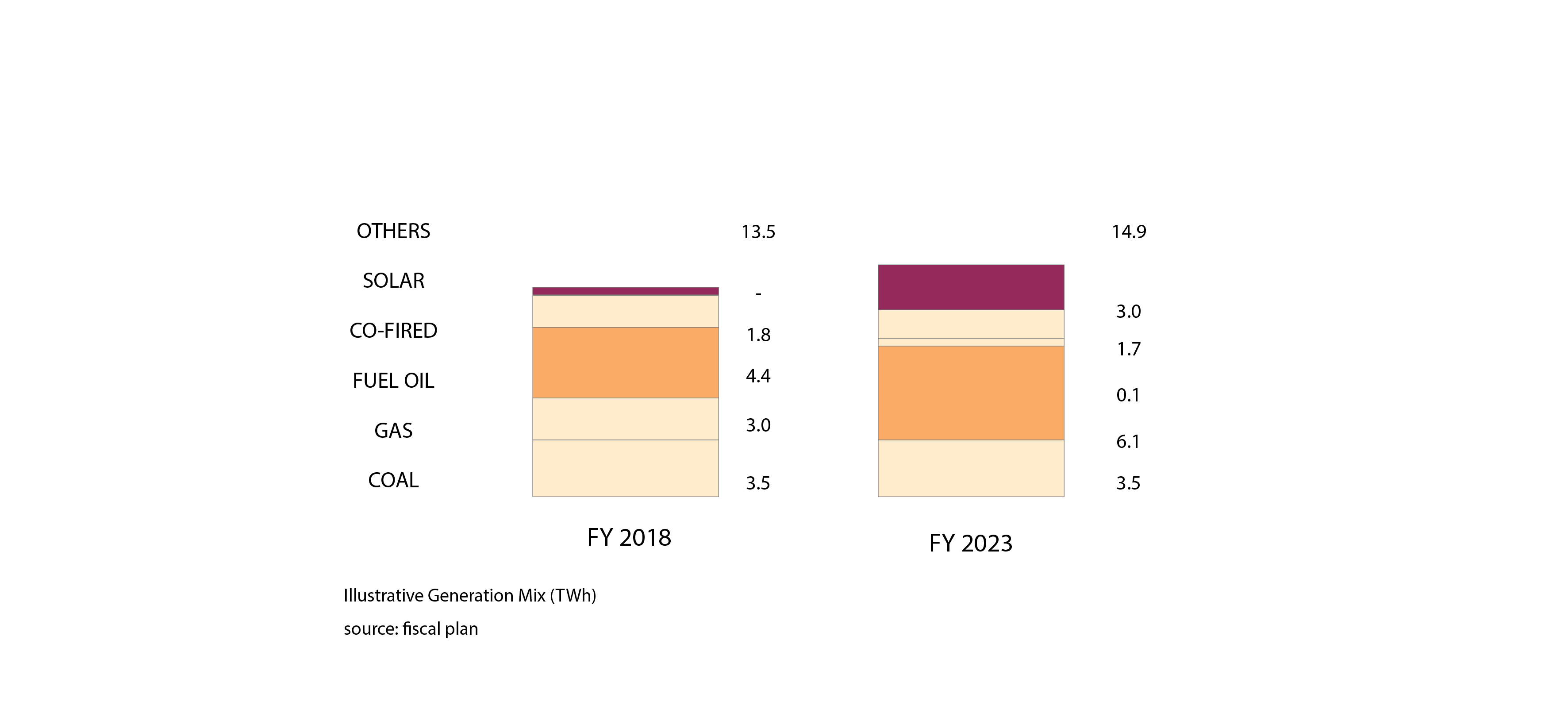
While a solar system has significant benefits, reducing high prices from imported fossil fuels, as well as building on resilience from extreme weather and vulnerable transmission infrastructure, the solar system technology is still out of the reach of the majority of Puerto Ricans. The current prices to install a household solar system range around 20.000 - 30.000 USD (quotes from for 3 to 5 kilowatts of photovoltaic (PV) capacity, with around 10 kilowatt-hours of usable storage¹), as foreign private companies such as Tesla and Sunnova invade Puerto Rican territory.
*Source: QUARTZ
Identifying a Future Pattern of Access to Solar Electricity - Method
As communities invest in solar under the threat of another devastating hurricane, we pose the question: who will have the right to solar electricity in the face of future power outages?
The investment in solar energy will change the patterns of a power outage and its recovery. In future hurricanes, the outage will no longer affect everyone and has the potential to further accentuate spatial inequality between those who can and cannot afford a micro-grid system.
While income level plays a role in determining who can afford a solar micro-grid, solar capacity (DNI - Direct Normal Irradiance) is also key to determine who can have access to it. Even though Puerto Rico has vast sun incidence in its coastline, a large part of its central territory and mountains do not receive the minimum DNI a household need to justify a micro-grid.
Income Map
 Data Source: US Census 2010
Data Source: US Census 2010
Solar Potential - Direct Normal Irradiance (DNI) Map
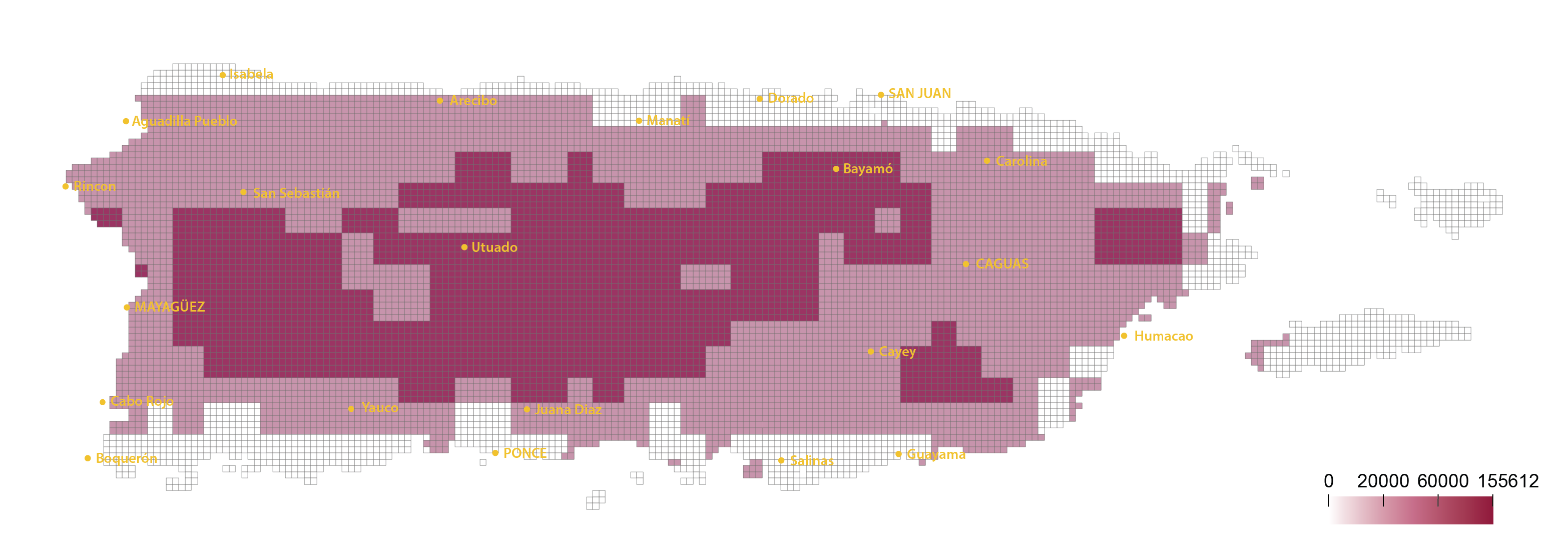 Data Source: National Solar Radiation Database
Data Source: National Solar Radiation Database
Using a method of Bivariate Choropleth Maps, we study the relationship between Median Household Income (in the past 12 months) and the Solar Potential measured by the Direct Normal Irradiance (DNI) data to determine who will, most likely, have access to electricity in face of future storms

- Building a relationship between income and solar potential
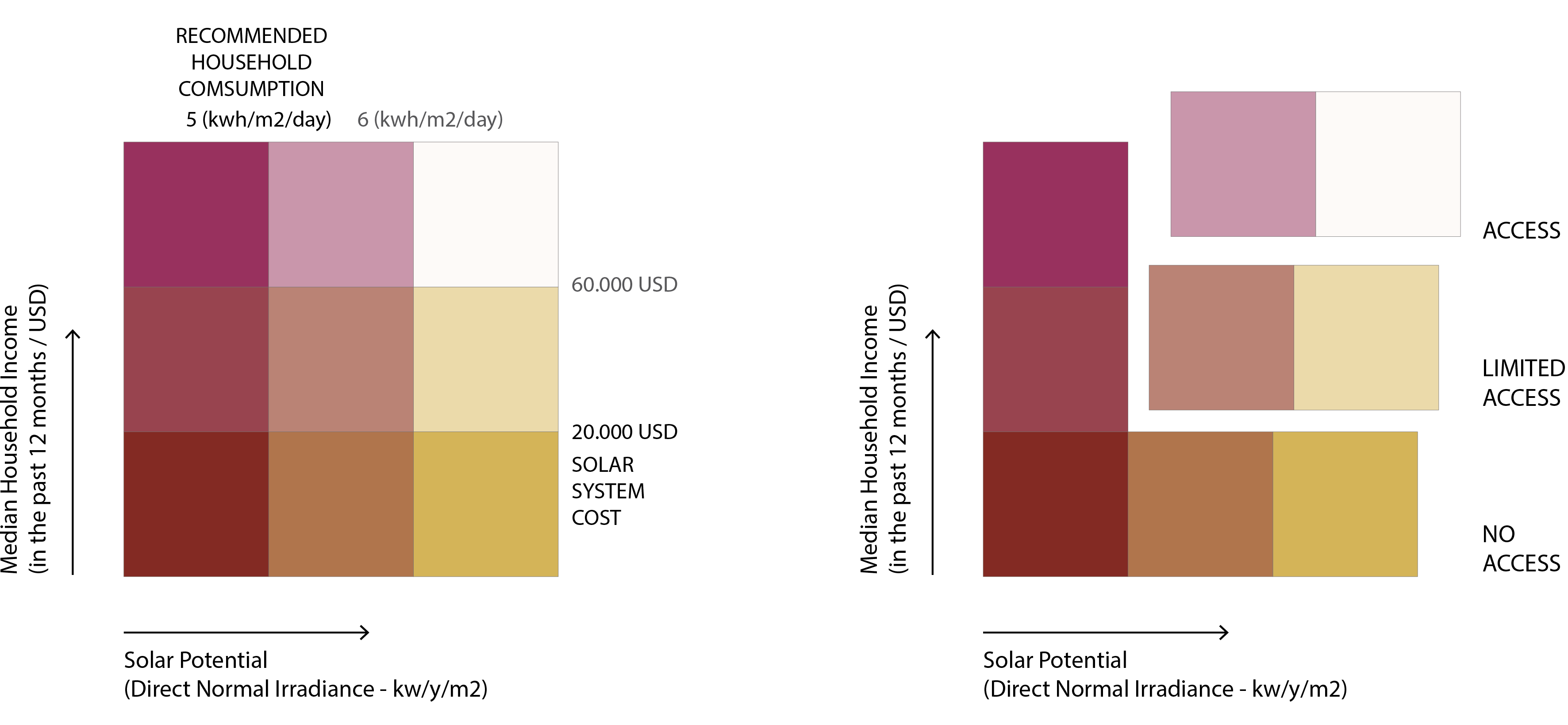
- Threshold of system feasibility and affordability
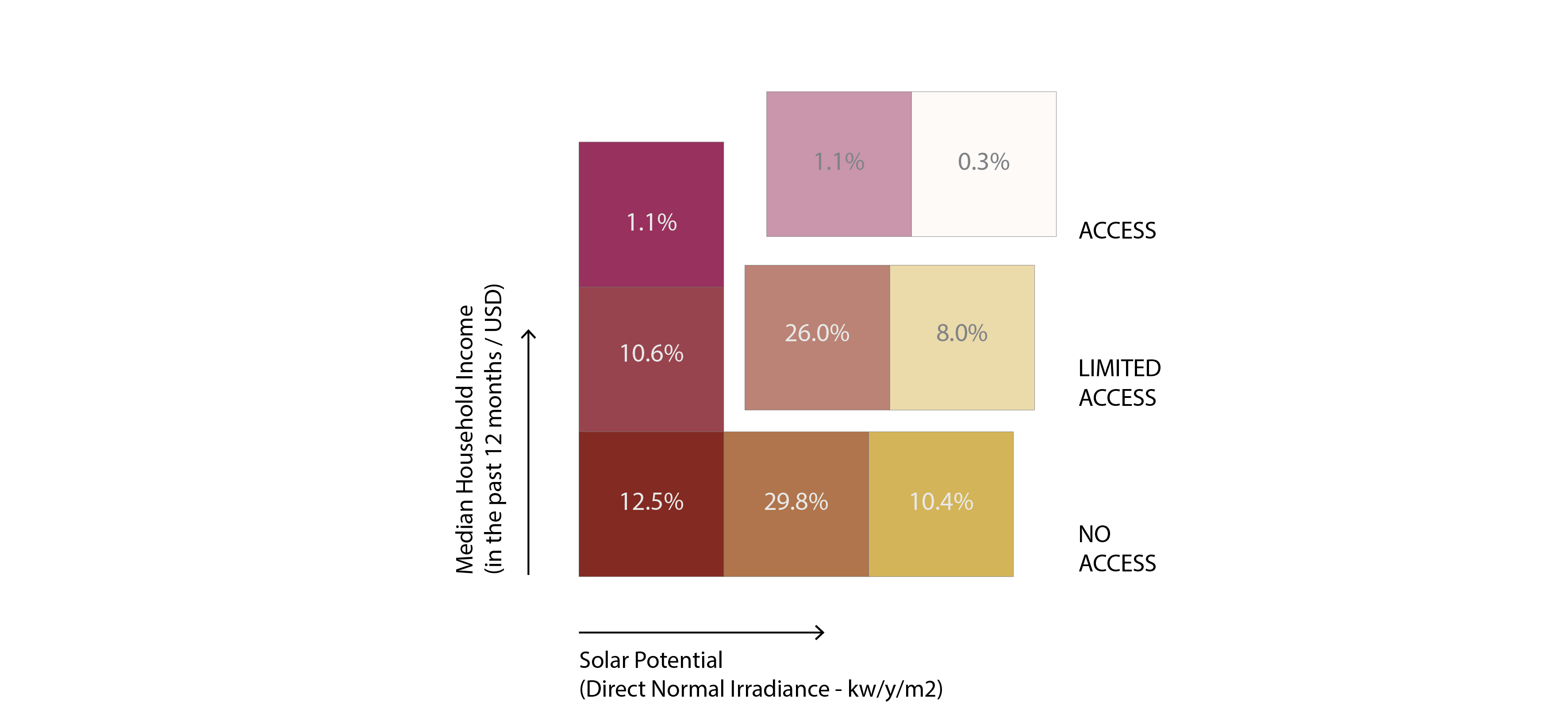
Identifying a Future Pattern of Access to Solar Electricity - Conclusion
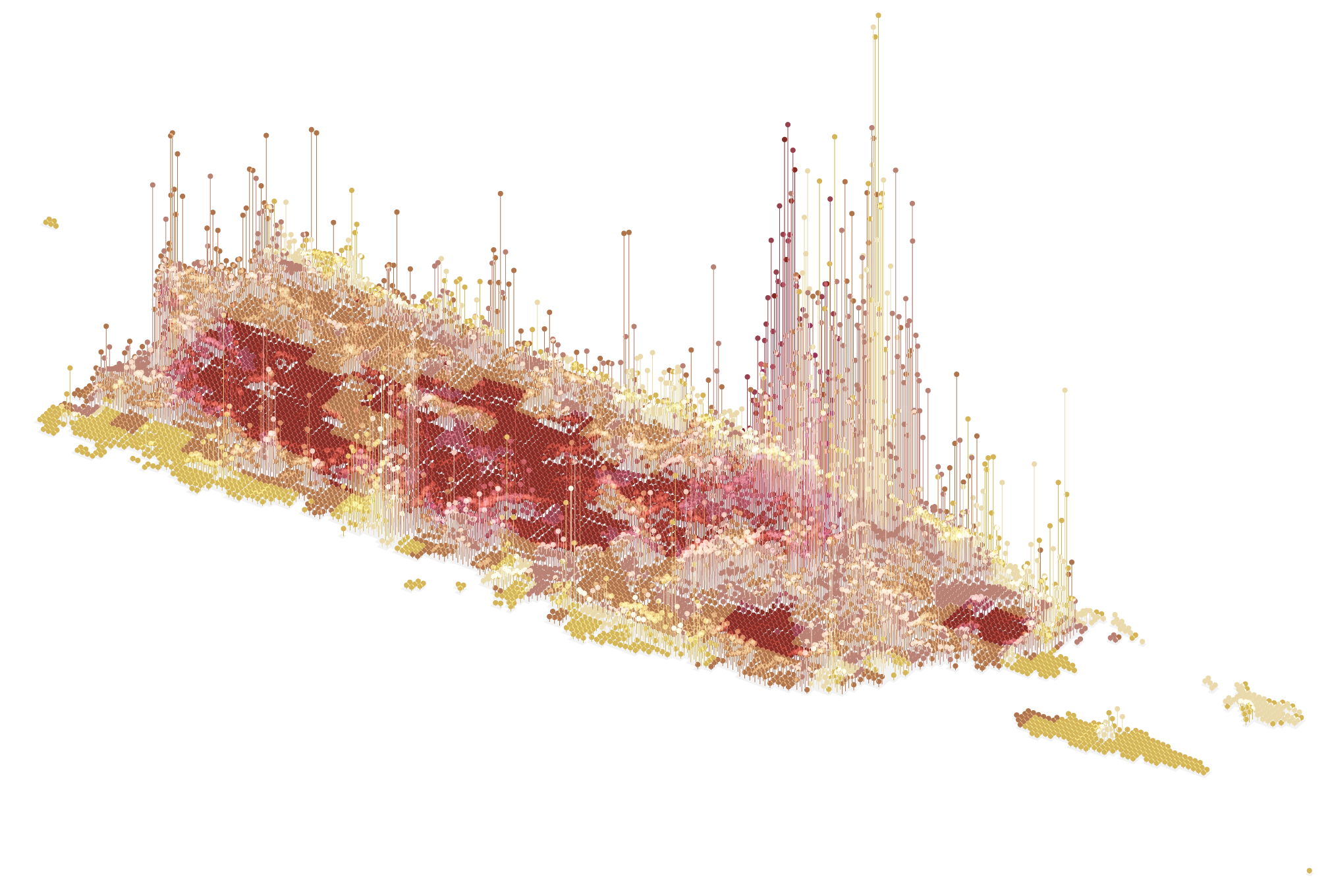 2.6 million (75.5%) will only have limited access
2.6 million (75.5%) will only have limited access
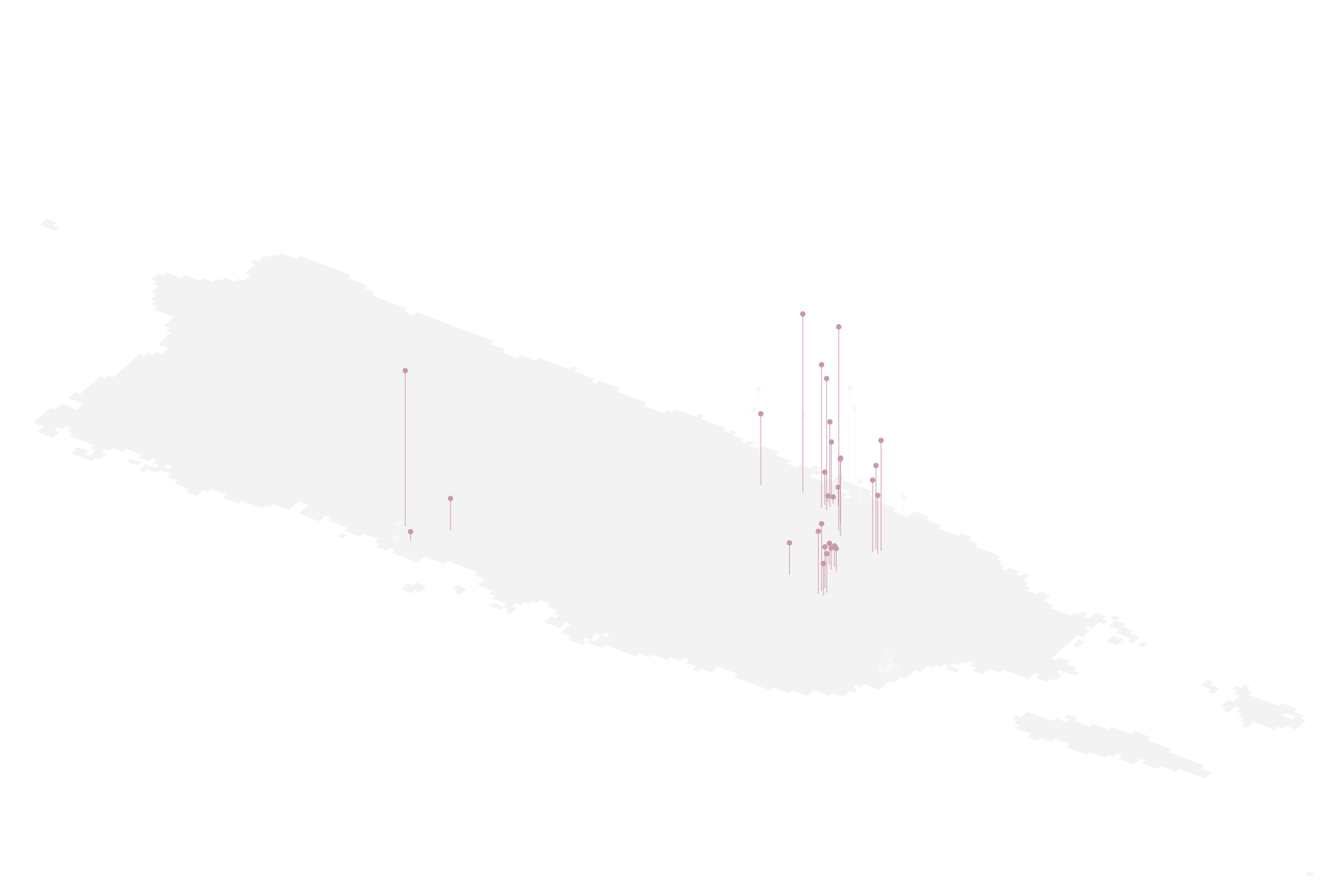 While 1.4% (49,021) of the population could have access to a solar micro-grid
While 1.4% (49,021) of the population could have access to a solar micro-grid
A NEW SOLAR ENERGY LANDSCAPE
Access to solar energy is conditional to both affordability and sun incidence, with access varying widely between adjacent neighborhoods. As one zoom’s in the capital San Juan, it is easy to notice these conditions.
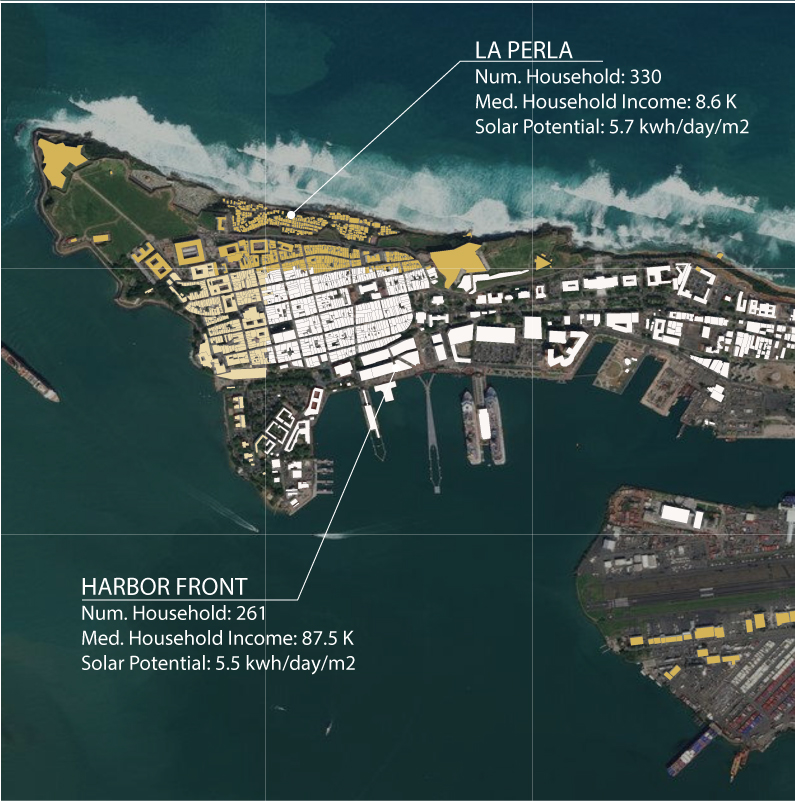
- La Perla has limited access while the Harbor Front neighborhood has access to solar due to claimed income levels
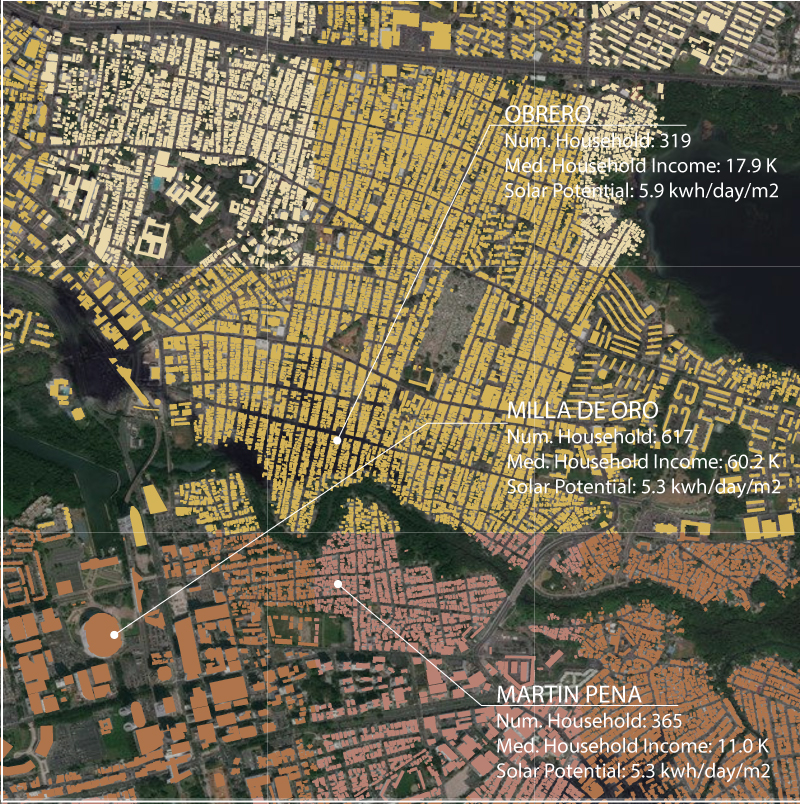
- Milla de Oro, affluent business district of San Juan does not have enough sun capacity (DNI) to install a solar system, while Caño Martin Peña with considerable less income levels have limited access to a micro-grid.
While many see solar as the future of Puerto Rico, over 64% of households cannot afford these micro-grids, while 34% will have limited access needing to invest around ⅓ of their household income into solar. A very few 1.6% of the island will configure the new landscape of those who will likely have access to immediate electricity in face future power outages.
With this latent scenario in which solar energy micro-grids are claimed to be the future of Puerto Rico, it is important to develop a well round implementation plan, that build on both government policies and community organization. If only dependent on current policies and international private companies, solar will not be the answer to Puerto Rico’s energy crises, but it will, in fact, further spacial and social inequality.
- Predicted Night Lights After Future Hurricanes
Call for Action
Our call for action builds on a two-fold strategy.
-
The government should implement guidelines and subsidies and allocate FEMA funds to regulate and lower the price of micro-grid solar systems in Puerto Rico.
-
Ccommunities and government should act together to build solar grids in public and civic facilities, such as hospitals, care centers, and schools to turn them into beacons of energy distribution, amplifying the reach of solar for those that live in areas with low solar capacity. This strategy builds on the existing work of several local organizations such as Casa Pueblo and Verdifica which been installing community micro-grids in key public infrastructures, so citizens can have access to power when in need.
It is imperative that both government and communities build on strategies to implement Solar energy in a distributed and equitable way ensuring a resilient energy landscape for Puerto Rico.
References:
-
Demand for Solar-Storage Systems Explodes in Puerto Rico - https://spectrum.ieee.org/energywise/energy/renewables/demand-for-solarstorage-systems-explodes-in-puerto-rico
- 0BBC News, “Why Hurricane Maria hit Puerto Rico so hard”, BBC, 26, September 2017. (Available at: https://www.bbc.com/news/av/world-us-canada-41408570)
- Almukhtar, Sarah, White, Jeremy, Yourish, Karen. “Hurricane Irma’s Vast Destruction in the Caribbean, Building by Building”, New York Times, 17, September 2017. (Available at: https://www.nytimes.com/interactive/2017/09/17/world/americas/irma-caribbean-damage.html)
- Santos, Juan. “What was Puerto Rico Googling Before and During Hurricane Maria”, August 7, 2018. (Available at: https://towardsdatascience.com/9e034d1752d1)
- Kirby, Jen, “Radio, Word of Mouth, and the Fleeting Cell Signal: How Puerto Rico Struggled to Communicate After Hurricane Maria”, NY Magazine, October 1, 2018. (Available at: http://nymag.com/intelligencer/2017/10/ how-puerto-rico-struggled-to-communicate-after-maria.html)
- Clarembaux, Patricia, Patino Contreras, Andres, “Surviving Hurricane Maria” Univision Noticias, 2018. (Available at: https://www.univision.com/especiales/noticias/2018/ sobreviviendo-al-huracan-maria-puerto-rico)
- Life Without Power (Available at: https://www.washingtonpost.com/graphics/2017/national/puerto-rico-sin-luz)
- Office of Cybersecurity, Energy, Security, and Emergency Response, “DOE Monthly Hurricane Event Report”, U.S. Department of Energy. (Available at: https://www.energy.gov/ceser/downloads/ hurricanes-nate-maria-irma-and-harvey-situation-reports)
- Night Lights Show Slow Recovery from Maria https://earthobservatory.nasa.gov/images/144371/night-lights-show-slow-recovery-from-maria\
- Recovering from Hurrican Maria https://earthobservatory.nasa.gov/images/92789/recovering-from-hurricane-maria
- Black Marble HD https://www.arcgis.com/apps/MapSeries/index.html?appid=6135434f7ffe4b13b815afc6dd052eb3